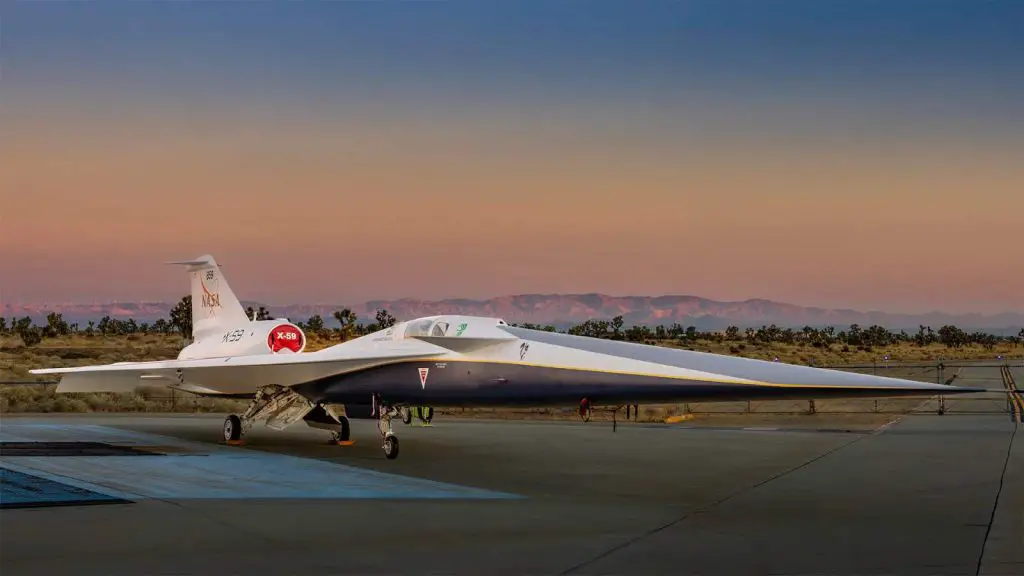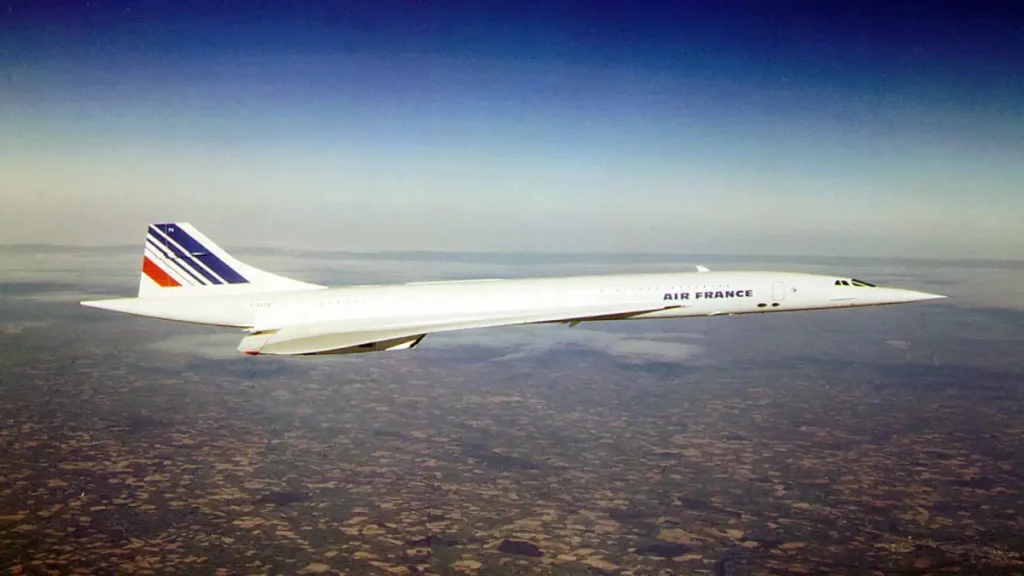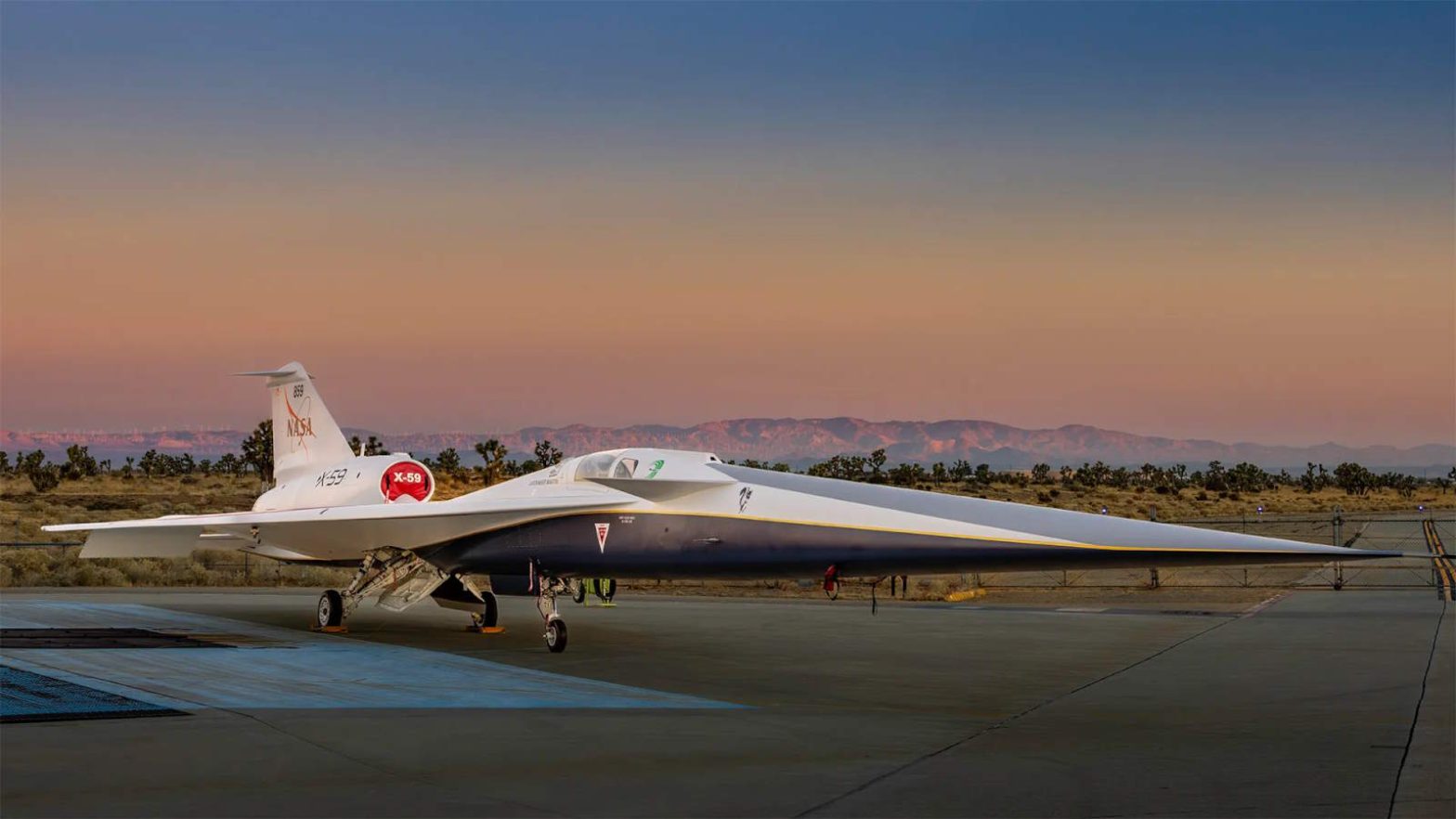NASA, in collaboration with Lockheed Martin, has officially introduced the X-59 quiet supersonic aircraft, a groundbreaking venture poised to redefine air travel. As the centerpiece of NASA’s Quesst mission [see notes 1], the X-59 is designed to address one of the primary challenges to supersonic flight over land – making sonic booms quieter. This unique experimental airplane aims to gather crucial data that could lead to a new era of faster-than-sound commercial flights. This concept has intrigued and challenged aviation experts for decades.
X-59: The Ambitious Journey from Concept to Reality
“This is a major accomplishment made possible only through the hard work and ingenuity of NASA and the entire X-59 team,” said NASA Deputy Administrator Pam Melroy. The journey from an ambitious concept to a tangible reality has been rapid and impressive. The X-59 represents a significant stride in NASA’s quest to revolutionize air travel, promising to bring distant places closer in much less time.
Unveiling a Technological Marvel
The aircraft was revealed at a ceremony hosted by prime contractor Lockheed Martin Skunk Works at its Palmdale, California facility. The X-59 lies at the heart of NASA’s Quesst mission, aimed at providing data to help regulators reconsider the rules prohibiting commercial supersonic flight over land. For the past 50 years, such flights have been restricted due to the disturbances caused by loud sonic booms in the communities below.

Understanding Sonic Booms: The Barrier to Supersonic Travel
A sonic boom is a phenomenon that occurs when an object travels through the air faster than the speed of sound, creating shockwaves. These shockwaves merge and reach the ground as a loud, startling noise, often compared to an explosion. This noise pollution has been a significant barrier to supersonic travel over populated areas.
The most notable example of this was the Concorde, the iconic supersonic passenger airliner. Despite its technological marvel, the Concorde faced heavy restrictions, especially over the continental United States, due to the disruptive sonic booms it generated, ultimately limiting its operational scope and economic viability.

The X-59’s Innovations: A Path to Quieter Skies
The X-59 is designed to fly at 1.4 times the speed of sound, approximately 925 mph (1,488 km/h), while generating a quieter sonic “thump” instead of the traditional boom. This is achieved through its unique design, shaping, and technologies. The aircraft’s long, thin, tapered nose, accounting for nearly a third of its length, helps break up the shock waves that would typically result in a sonic boom. The X-59’s innovative design marks a radical departure from traditional aircraft, promising a future where supersonic flights could occur without the accompanying noise disruption.
From Concept to Flight: Preparing the X-59 for Takeoff
With the rollout complete, the Quesst team is now focusing on the next steps: integrated systems testing, engine runs, and taxi testing for the X-59. The anticipation for its first flight later this year is high, followed by its first quiet supersonic flight. These tests will initially take place at Skunk Works before the aircraft is transferred to NASA’s Armstrong Flight Research Center in Edwards, California, where it will serve as the primary base of operations.
Collaborative Efforts Behind the Quiet Supersonic Breakthrough
John Clark, vice president and general manager at Lockheed Martin Skunk Works, highlights the collaborative spirit behind this project. “Talented, dedicated, and passionate scientists, engineers, and production artisans across both teams have collaborated to develop and produce this aircraft,” he says. This partnership exemplifies the blend of NASA’s vision and Lockheed Martin’s technological expertise, working together to shape the future of supersonic travel over land.
The Future of Supersonic Travel and Public Perception
Once NASA completes its flight tests, the agency plans to fly the aircraft over selected cities across the U.S., gathering public input about the sound generated by the X-59 and how it is perceived. This data will be crucial for the Federal Aviation Administration and international regulators, potentially redefining the rules of commercial supersonic travel. The success of the X-59 could pave the way for new commercial aircraft designs that incorporate its quiet supersonic technology.
The X-59: Experimental, Not a Prototype
It’s essential to understand that the X-59 is an experimental airplane, not a prototype for commercial use. Its purpose is to inform future generations of quiet supersonic aircraft. The X-59 measures 99.7 feet in length and 29.5 feet in width. Its design and the technological advancements it incorporates are critical in making quiet supersonic flight a reality.
Revolutionary Design for a Quieter Supersonic Experience
The X-59’s unique configuration, with its cockpit located almost halfway down the length of the aircraft, does not include a forward-facing window. This design challenge was overcome with the eXternal Vision System, comprising high-resolution cameras feeding a 4K monitor in the cockpit. Additionally, the aircraft’s engine is mounted on top, with a smooth underside to help prevent shockwaves from merging behind the aircraft, which is a common cause of sonic booms.
Looking Ahead: The Impact of the X-59 on Global Air Travel
The introduction of the X-59 Quiet Supersonic Aircraft by NASA and Lockheed Martin represents a significant milestone in aviation history. By potentially overcoming the sonic boom challenge, this project opens the door to a future where supersonic travel over land is not only feasible but also environmentally and socially responsible. The X-59’s quiet supersonic technology could revolutionize global air travel, reducing travel times significantly while maintaining minimal noise impact on communities. This venture is a testament to human ingenuity and the relentless pursuit of advancing technology for the betterment of society.
In summary, the X-59 is much more than just an aircraft; it is a symbol of the future, a beacon of innovation in aerospace technology. Its success could redefine the boundaries of air travel, making the world a smaller, more connected place. As we await its first flight and subsequent developments, the X-59 stands as a pivotal step towards a new chapter in aviation history, where speed and silence coexist harmoniously in the skies.
Notes
1. Quesst (Quiet SuperSonic Technology) mission
NASA’s Quesst (Quiet SuperSonic Technology) mission has two goals:
- Design and build NASA’s X-59 research aircraft with technology that reduces the loudness of a sonic boom to a gentle thump to people on the ground.
- Fly the X-59 over several U.S. communities to gather data on public responses to the sound generated during supersonic flight and deliver that data set to U.S. and international regulators.
The Quesst mission is comprised of three phases:
- Build the X-59 aircraft.
- Test it in the air.
- Fly the airplane over communities to survey what residents hear.
Sources
- Questt [Quiet SuperSonic Technology] Misson on the NASA website
- “NASA, Lockheed Martin Reveal X-59 Quiet Supersonic Aircraft” on the NASA website
- Lockheed Martin X-59 Quesst on Wikipedia
- Moon Landings: All-Time List [1966-2025] - February 2, 2025
- What Is Max-Q and Why Is It Important During Rocket Launches? - January 16, 2025
- Top 10 Tallest Rockets Ever Launched [2025 Update] - January 16, 2025
